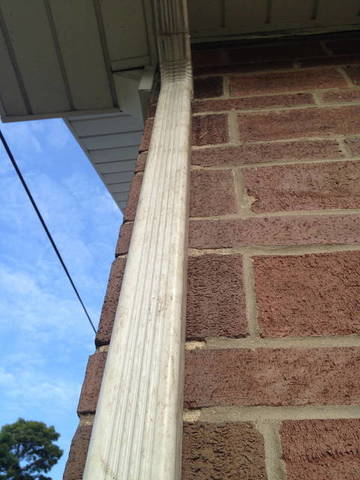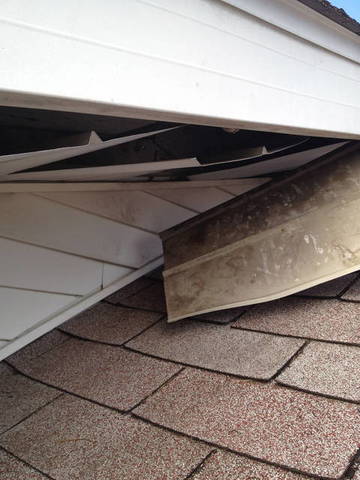Mounted on a brick surface like that as shown is a difficult access prevention.Depending upon the access to the house interior a chimney cap, dormer repairs, vent covers or soffit fix will be a more effective measure of prevention.Then the obvious removal of the problem animal(s)will take away the familiar offenders.
Tell the to the Buddhist monks in Japan,,,,,,,,

While the temple is busily trying to seal off any points of entry for a would-be pest, Monsho Kamii is worried that the temple could be damaged again. “I hope the government quickly comes up with protective measures,” he says.
According to Kamii, in spring of last year, a pillar on the outer side of the south corridor of Phoenix Hall suffered 14 scratches that were four-to-five centimeters wide and about five centimeters long. The Kansai Wildlife Research Association, a local citizens’ group, judged that the scratches were the work of an adult raccoon, four-to-seven kilograms in weight, that had been sliding on the pillar when going to and from an attic area. Attempts to capture the animal failed, but in summer of last year metal screens were put up to seal around 20 areas where animals could sneak about, such as holes under the temple’s eaves, and no further damage has been seen since.
Raccoons are a type of animal that is not native to Japan. According to the above-embedded ATV news report, they are designated by the government as a harmful alien species. Thousands of wild raccoons are captured and disposed of by authorities in Japan each year, but they continue to thrive and cause trouble.
Why are there raccoons in Japan? A Japan Times article from 2008 has the answer:
Japan imported North American raccoons as pets in the 1970s when they became popular on an animated TV show. Many ended up being discarded or they ran away.
At the peak, Japan was importing more than 1,500 raccoons a year. The government has since banned importing them or keeping them as pets.
The article states that in 2006, Raccoons were blamed for over ¥160 million in damage to agricultural produce







